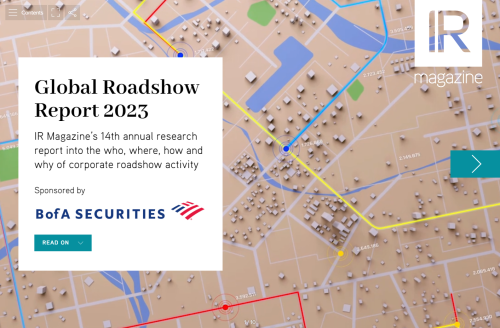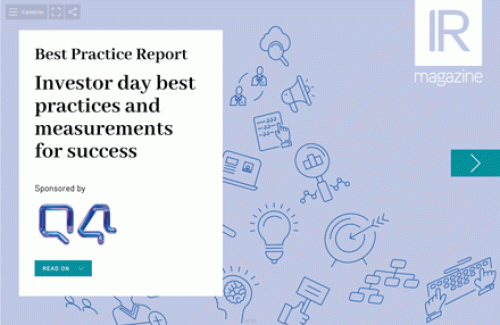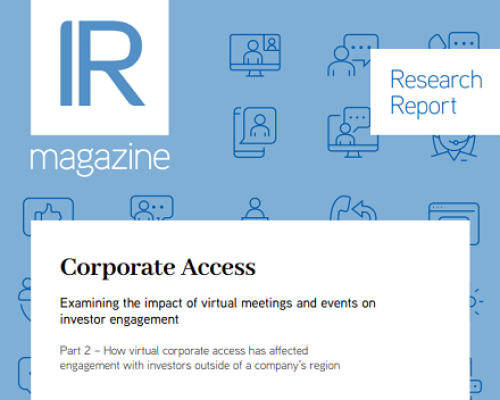At the IR Magazine Forum – South East Asia 2022, held virtually this week, a series of panel sessions looked at the evolving role of IROs across South East Asia, shareholder needs, digital IR strategies and the role of senior management in IR.
Conversation also expanded to address a year of economic unease, assessing what to expect in the region’s capital markets next year and what macroeconomic trends to prepare for in 2023. Below we summarize four talking points likely to set the IR agenda in South East Asia in 2023.
Chinese market macro outlook for 2023
At the forum opening session, Helen Qiao, chief economist and head of Asia economics research at Bank of America (BofA), shared insights on the company’s bullish growth forecast for 2023 in China. ‘In terms of the growth perspective, we think China stands a good chance to manage the [market] reopening,’ she said.
In a detailed view of what a bumpy reopening recovery would mean for China, Qiao said BofA forecast an overall 5.5 percent growth in domestic GDP next year.

‘This is on the back of two things,’ noted Qiao. ‘Number one is that the 2022 growth numbers are going to be relatively weak – probably we are going to end up this year at 3 percent, which is much lower than the government target of 5.5 percent. Secondly, we think this is going to be helped by the domestic demand rebound, especially in consumption.’
But Qiao added that things are possibly going to get worse before they get better and the first two quarters of 2022 could see a slump before a recovery in the second and latter parts of the year.
‘For two quarters in a row we [expect a] very sharp slowdown in sequential growth and that will lead to the deceleration in GDP growth,’ she said. ‘We are saying that things will get worse starting from now, especially into the first quarter of next year, before getting better in the second half. This is the trajectory we are looking at.’
Time to switch to hybrid?
The Covid-19 pandemic forced businesses to leverage technology and completely shift to virtual engagement. The post-pandemic world now offers companies a choice to either switch back to in-person events, continue to enjoy the benefits of virtual working or use both formats in a hybrid model.
One of the sessions at the forum looked at what format companies in South East Asia opted for in 2022 and what expectations are for 2023. For Christine Lau, head of IR at Celcom Digi, there are multiple benefits to virtual engagements, both from a financial point of view and also when it comes to being able to communicate to a higher number of investors across the world.

‘The bulk of the events we organized in 2022 were mainly virtual,’ she said. ‘We have significantly reduced physical face-to-face engagements, simply because there are a lot of corporate exercises that we are managing at the moment. Also, we want to make sure the sell side and the buy side have sufficient access to the management team – and management teams are busy, so virtual engagement is the best way to give them that access.’
Affryll Teo, head of investor relations, sustainability and M&A at Tune Protect Group, noted that his company held four online sessions with retail investors in 2022. ‘All of them were virtual and there were no restrictions on who could enter because it was video. We opened it up to anyone who was interested,’ he recalled.

Looking at next year, however, Teo said his team is now considering the hybrid model for AGMs. ‘My view is that the cost is double,’ he explained. ‘A physical meeting and a virtual meeting are separate costs, but we have to accept the fact that this is the new reality and we do not have a choice: we have to cater.’
Lau added that for her company a virtual model has had a positive impact on shareholder engagement, allowing the firm to reach out to a larger number of investors without impacting the quality of communication.
‘If you want to have physical engagement, you need to evaluate why you need to spend the extra money to meet these investors,’ she said. ‘What is the value added?’
Enhancing the digital IR strategy
The pandemic might have rewritten the IR rule book but what has not changed is the need to effectively engage with current and future investors. The importance of a digital presence for investor relations has increased and, as the technology has evolved, so have IR opportunities. But how can IR bring the ‘wow factor’ to its meetings and capture investors’ attention?
‘We’ve certainly seen IROs starting to dip their toe into broadcasts with a slide element. We’re all very familiar with the presentations, but allowing that live broadcast with slides [is] what we’ve been seeing seen,’ said Ben Riley, UK business development specialist at Lumi. ‘We’ve seen massive successes and companies have embraced the video side of things.’

Looking at the future of investor meetings, Riley pointed out two major developments that are likely to bring virtual engagement to the next level: ‘low latency broadcasting’ and the ability to not only hear analysts and shareholders in Q&A sessions, but also see them.
Low-latency broadcasting reduces the time it takes for computer data to be processed over a network connection.
‘I am convinced this technology is going to be embraced in the IR sphere – being able to see as well as hear investors when they want to ask a question,’ Riley said. ‘Now, that sounds awfully terrifying and very risky so, of course, a thing to bear in mind is that a strong back-end side of things [is needed]. A very powerful dashboard to moderate these questions has to exist and I’m pleased to say it does exist.’
A reminder of what makes good IR
‘I always see IR as the storyteller of the company, the spokesperson of the firm,’ said Siew Lu Wong, head of IR and sustainability at United Hampshire US REIT and one of the panelists at the closing session of the forum, which looked at the lessons learned this year by IROs and investors and best practice advice in challenging times.

‘As IROs we translate complex business jargon into simple words and then communicate that to the investment communities,’ she said. ‘We also serve as the communication channel between an external investment community and our internal management team.’
Educating the community and asking for feedback is also paramount for Wong in order to keep a good relationship with shareholders.
Sharing her positive advice, she said: ‘If your company share price is [performing very badly] this year, you are not alone and it’s not because we [as IROs] don’t do enough. Keep engaging with the investor community and continue to be a good storyteller. When the market turns, we will all do very well again’.
To find out more about the IR Magazine Forum and Awards – South East Asia 2022, please click here.










